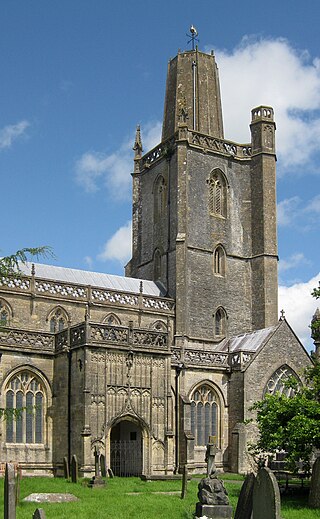
Yatton is a village and civil parish within the unitary authority of North Somerset, which falls within the ceremonial county of Somerset, England. It is located 11 miles (18 km) south-west of Bristol. Its population in 2011 was 7,552. The parish includes Claverham, a small village which was originally a farming hamlet.
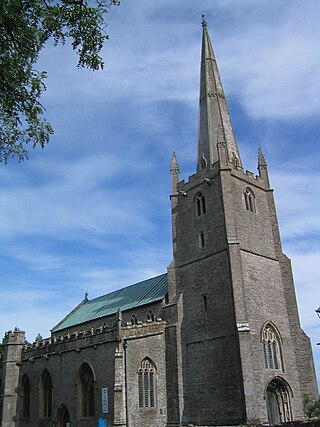
Congresbury is a village and civil parish on the northwestern slopes of the Mendip Hills in North Somerset, England, which in 2011 had a population of 3,497. It lies on the A370 between Junction 21 of the M5 and Bristol Airport, 13 miles (21 km) south of Bristol city centre, and 7 miles (11 km) east of Weston-super-Mare. The Congresbury Yeo river flows through the village. The parish includes the hamlet of Brinsea.

Woodspring Priory is a former Augustinian priory. It is near the scenic limestone promontory of Sand Point and Middle Hope, owned by the National Trust, beside the Severn Estuary about 3 miles (5 km) north-east of Weston-super-Mare, within the English unitary authority of North Somerset. Many of the buildings are Grade I listed, and the whole site is scheduled as an ancient monument.

Langford Budville is a village and civil parish in Somerset, England, situated near the River Tone 2 miles (3.2 km) north-west of Wellington, 4.5 miles (7.2 km) from Wiveliscombe and 6 miles (9.7 km) west of Taunton in the Somerset West and Taunton district. The parish includes the hamlets of Bindon, Lower Chipley, Lower Wellisford, Ramsey and Runnington. The parish has a population of 535.

Stoke St Gregory is a village and civil parish in Somerset, England, about 7 miles (11 km) east of Taunton in the Somerset West and Taunton district. The village is on a low ridge of land between the River Tone to the north and West Sedgemoor to the south. The 2011 Census recorded the parish's population as 942.

Badgworth is a village and civil parish in Somerset, England, 2 miles (3.2 km) south west of Axbridge. According to the 2011 census it had a population of 525.
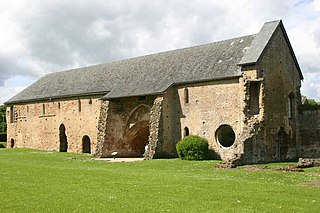
Cleeve Abbey is a medieval monastery located near the village of Washford, in Somerset, England. It is a Grade I listed building and has been scheduled as an ancient monument.

Saltford is a large English village and civil parish in the Bath and North East Somerset unitary authority, Somerset. It lies between the cities of Bristol and Bath, and adjoins Keynsham on the same route. Saltford Manor House claims to be the oldest continuously occupied dwelling in England.

Old Cleeve is a village 5 miles (8 km) south east of Minehead in the Somerset West and Taunton district of Somerset, England, and also a civil parish. The civil parish of Old Cleeve covers an area of 2,092 hectares and includes the villages of Old Cleeve, Blue Anchor, Roadwater and Washford as well as hamlets such as Bilbrook, Chapel Cleeve, Golsoncott and Leighland Chapel. Approximately half the parish lies within the Exmoor National Park. The remaining half is on the southern edge of Exmoor. The village has been in existence since the early 13th century. The village held its first council meeting in 1711. By the 1720s the village had several churches, in which to meet. The town hall was built in 1727. The first church here was built in 1694, built by the Eastern Christian Society. This church was destroyed in a fire in 1847, and has been rebuilt and restored. In 2011, the population of the parish was 1,672.
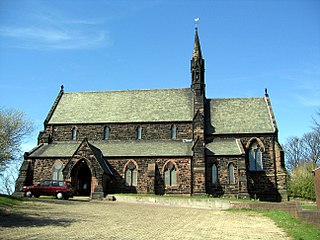
St Mary's Church is in Halton, which was formerly a separate village, but is now part of the town of Runcorn, Cheshire, England. It is an active Anglican parish church in the diocese of Chester, the archdeaconry of Chester and the deanery of Frodsham. The church is recorded in the National Heritage List for England as a designated Grade II listed building.
North Somerset is a unitary authority in the ceremonial county of Somerset, England. In the United Kingdom, the term listed building refers to a building or other structure officially designated as being of special architectural, historical or cultural significance; Grade I structures are those considered to be "buildings of exceptional interest". Listing was begun by a provision in the Town and Country Planning Act 1947. Once listed, severe restrictions are imposed on the modifications allowed to a building's structure or its fittings. In England, the authority for listing under the Planning Act 1990 rests with Historic England, a non-departmental public body sponsored by the Department for Digital, Culture, Media and Sport; local authorities have a responsibility to regulate and enforce the planning regulations.

Vicars' Close, in Wells, Somerset, England, is claimed to be the oldest purely residential street with original buildings surviving intact in Europe. John Julius Norwich called it "that rarest of survivals, a planned street of the mid-14th century". It comprises numerous Grade I listed buildings, comprising 27 residences, built for Bishop Ralph of Shrewsbury, a chapel and library at the north end, and a hall at the south end, over an arched gate. It is connected at its southern end to the cathedral by a walkway over Chain Gate.

The Anglican Church of St Andrew in Congresbury, Somerset, England dates from the 13th century and has been designated as a Grade I listed building.

The Church of The Holy Saviour in Puxton, Somerset, England, dates from the 13th century. It is recorded in the National Heritage List for England as a designated Grade I listed building, and is a redundant church in the care of the Churches Conservation Trust. It was vested in the Trust on 1 August 2002.
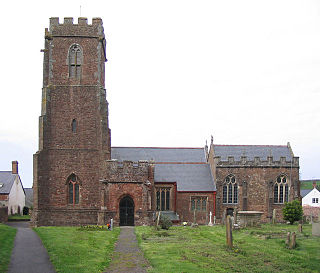
The Church of St Mary in Stogumber, Somerset, England dates from the late 13th century. It has been designated as a Grade I listed building.

The Church of St Michael in Milverton, Somerset, England dates from the 13th century, on the site of an even earlier chapel, and has been designated as a Grade I listed building.
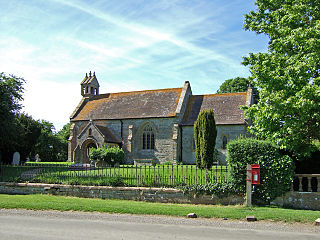
The Anglican Church of St Vincent at Ashington in the civil parish of Chilton Cantelo, Somerset, England, is from the 13th century. It has been designated as a Grade I listed building.

St Cuthbert's is an Anglican church in Lytham, Lancashire, England. It was built 1834–1835, replacing a previous church on the same site. It is an active parish church in the Diocese of Blackburn. Since 1971 it has been designated a Grade II* listed building.

St Benedict's Church, Bordesley is a Church of England parish church in Hob Moor Road, Bordesley, West Midlands, England, about 2+1⁄2 miles (4 km) east of Birmingham city centre. It is an early 20th-century church in Byzantine Revival style and is Grade II listed.

The Anglican Church of St Peter and St Paul in Wincanton within the English county of Somerset is a Grade II* listed building. The Church of St Peter and St Paul was almost totally rebuilt 1887-91 by J. D. Sedding, however parts of the tower may be remnants form an earlier church, dating from 1313, on the same site.



















